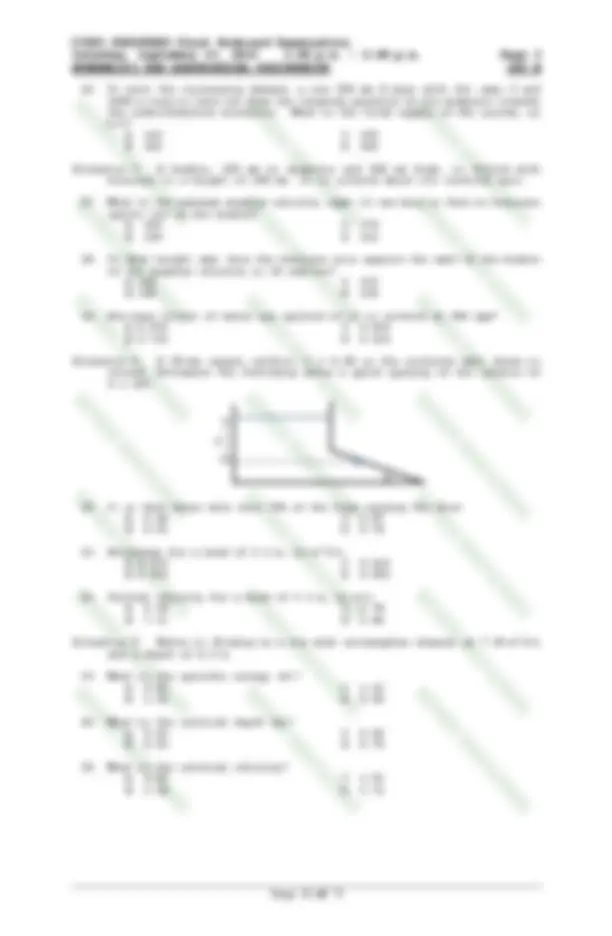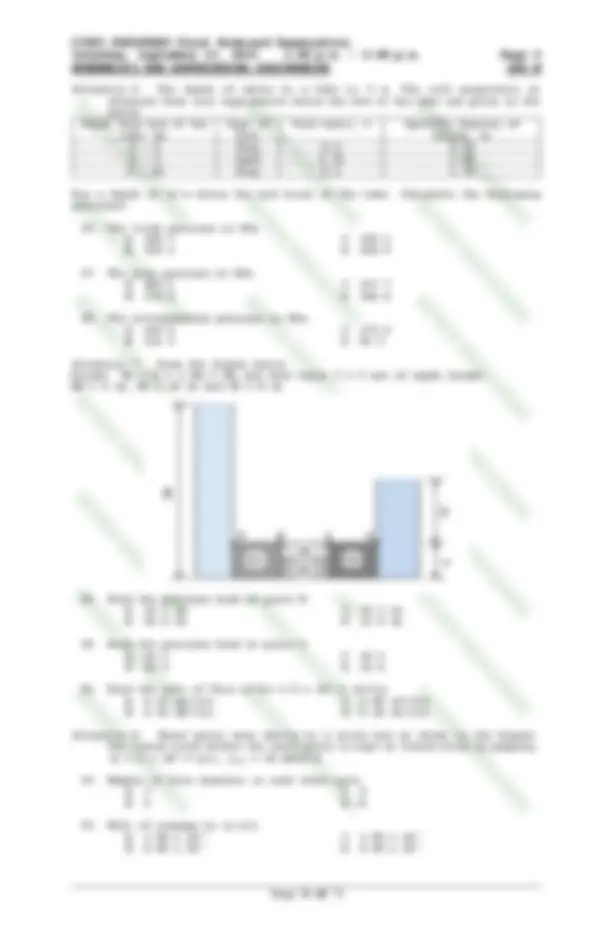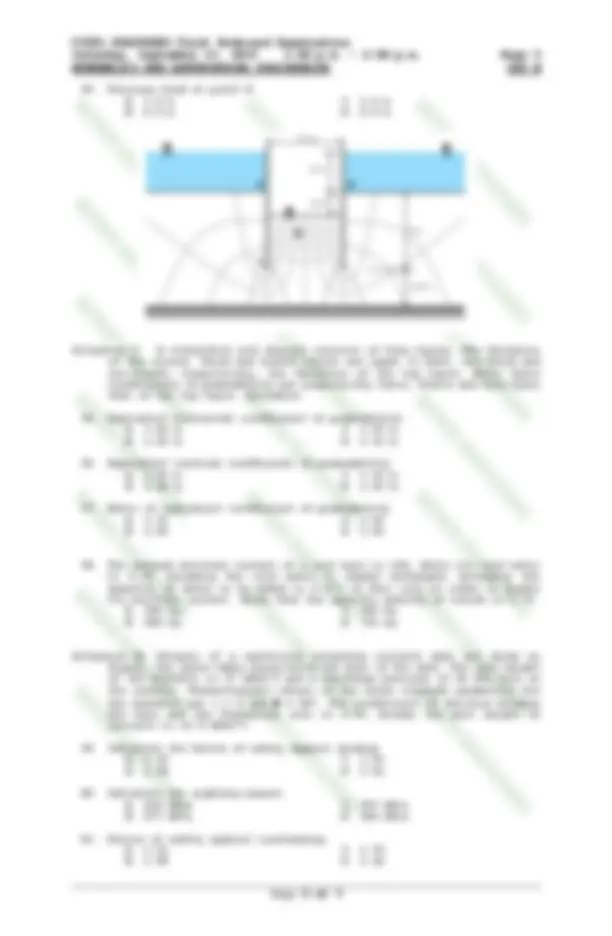





Study with the several resources on Docsity

Earn points by helping other students or get them with a premium plan


Prepare for your exams
Study with the several resources on Docsity

Earn points to download
Earn points by helping other students or get them with a premium plan
Community
Ask the community for help and clear up your study doubts
Discover the best universities in your country according to Docsity users
Free resources
Download our free guides on studying techniques, anxiety management strategies, and thesis advice from Docsity tutors
Preboard examination for civil engineering
Typology: Exams
1 / 7

This page cannot be seen from the preview
Don't miss anything!




INSTRUCTION: Select the correct answer for each of the following questions. Mark only one answer for each item by shading the box corresponding to the letter of your choice on the answer sheet provided. STRICTLY NO ERASURES ALLOWED.GOOD LUCK. NOTE: A times B is represented by A × B or A*B. A raised to the power n is expressed as A^n. All problems are 1 point each.
El. 106 m El. 66 m 0.6 m 0.3 m 0.4 m 2000 m 2000 m 3000 m El. 76 m
Situation 6. The depth of water in a lake is 3 m. The soil properties as obtained from soil exploration below the bed of the lake are given in the below. Depth from bed of the lake (m) Type of Soil Void ratio, e Specific Gravity of Solids, G s 0 – 4 Clay 0.9 2. 4 – 9 Sand 0.75 2. 9 – 15 Clay 0.6 2. For a depth of 12 m below the bed level of the lake. Calculate the following pressures.
Situation 13. Situation: Two footings rest in a layer of sand 2.7 m thick. The bottoms of the footings are 0.90 m below the ground surface. Under the clay layer is rock. The water table is at a depth of 1.8 m below the ground surface. Footing A is 1.5 m square. e =1.03 Cc = 0.